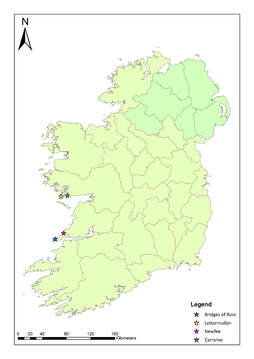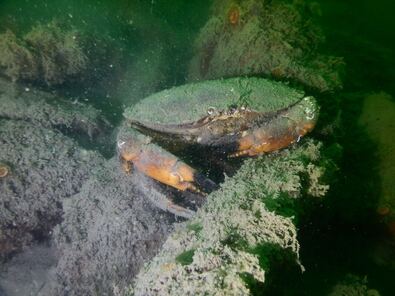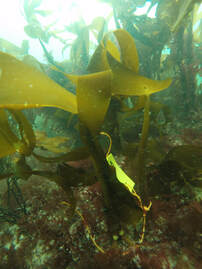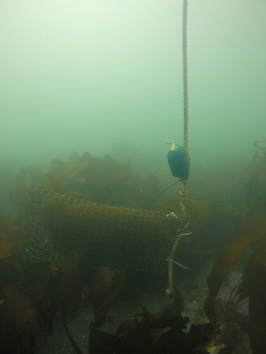
IRC project "Closing the knowledge gap on Irish kelp forest ecology"
This project aims to describe population structure, productivity, and biodiversity of kelp forests along the west coast of Ireland. Aquatic primary producers like kelp provide essential habitats and ecosystem services for coastal communities. In Ireland very little is known about community dynamics within kelp forests and how the ecophysiology of Irish kelp may influence structure and function of these habitats.
Seasonal observations, collections, and measurements are used to answer these queries about Irish kelp forests. The project has many components described below, and is complemented by surveys in non-kelp habitats done in collaboration with SeaSearch Ireland.
This project aims to describe population structure, productivity, and biodiversity of kelp forests along the west coast of Ireland. Aquatic primary producers like kelp provide essential habitats and ecosystem services for coastal communities. In Ireland very little is known about community dynamics within kelp forests and how the ecophysiology of Irish kelp may influence structure and function of these habitats.
Seasonal observations, collections, and measurements are used to answer these queries about Irish kelp forests. The project has many components described below, and is complemented by surveys in non-kelp habitats done in collaboration with SeaSearch Ireland.

Biodiversity of kelp forest habitats
Habitats in Co. Galway and Co. Clare are founded by granite type bedrock and limestone respectively. The kelp forest is dominated by Laminaria hyperborea, but also includes species Laminaria digitata (shallow), Sacchoriza polyschides (summer season), and Sacchrina latissima. The diversity and abundance of species in kelp forests are unique, and communities fluctuate seasonally. Echinoderms and two spot gobies are among few indicator species found in kelp forests, while fish and crustacean populations, including juveniles, increase densities in the summer season.
Schoenrock, K.M.*, T. O'Callaghan, R. O'Callaghan, A.M. O'Connor, and D.B. Stengel (2021). An ecological baseline for Laminaria hyperborea forests in western Ireland. Limnology and Oceanography, 66(9): 3439-3454.
Habitats in Co. Galway and Co. Clare are founded by granite type bedrock and limestone respectively. The kelp forest is dominated by Laminaria hyperborea, but also includes species Laminaria digitata (shallow), Sacchoriza polyschides (summer season), and Sacchrina latissima. The diversity and abundance of species in kelp forests are unique, and communities fluctuate seasonally. Echinoderms and two spot gobies are among few indicator species found in kelp forests, while fish and crustacean populations, including juveniles, increase densities in the summer season.
Schoenrock, K.M.*, T. O'Callaghan, R. O'Callaghan, A.M. O'Connor, and D.B. Stengel (2021). An ecological baseline for Laminaria hyperborea forests in western Ireland. Limnology and Oceanography, 66(9): 3439-3454.


